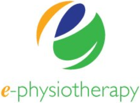Gastrioesophageal reflux disease (GERD or GORD) is a common condition, especially as people get older, where small amounts of the stomach contents move upwards into the oesophagus, causing a burning sensation due to the high acidity of the stomach contents. Many people do not get symptoms, only discovering they have GERD/GORD when they have tests done such as an endoscopy for other issues. There is an increased risk of oesophageal cancer if you have gastric reflux, so finding a way to manage or resolve it is important. The most common treatment is a medication called protein pump inhibitors (PPIs). This does not resolve the symptoms for all sufferers and long term use may cause other health issues. Surgical intervention is a last resort and may also not resolve GERD/GORD.
The lower oesophageal sphincter (LOS or LES) should help to stop reflux but it alone is not enough to control reflux. The diaphragm’s central part, called the crural diaphragm, wraps around the LES in a figure eight shape. When it contracts it helps to reinforce the LES and further help to reduce reflux. This is a little known fact and rarely are breathing exercises used to help control GERD/GORD.
A number of studies have shown that doing breathing exercises, more specifically resisted inspiratory breathing exercises, can improve symptoms and reduce reflux. The protocols for improving diaphragm strength and hence reduce gastric reflux, vary but generally involve using a resistance device to make breathing in more difficult for a specified number of repetitions. As with all strengthening, it can take a more than a month to notice changes in strength and symptoms.
Physiotherapists are trained in breathing exercises as part of basic training and can help to ensure you do these exercises correctly to gain the maximum benefit.
The diaphragm is innervated by levels C3-5 in the neck. If there is degeneration, stenosis or even stiffness in the joints of the neck at this level, it can impair the ability of the diaphragm to activate. Not only will this make breathing more difficult, but it will worsen gastric reflux as the diaphragm will be providing less support to the lower oesophageal sphincter. Manual therapy targeting the C3-5 levels of the spine may help to improve your diaphragm activation and your reflux.
Another way to help reduce gastric reflux is to see a physiotherapist or osteopath who is trained in visceral manipulation. Visceral manipulation is a fascial release technique that is used on the internal organs of the abdomen. This can help gastroesophageal reflux by reducing fascial tension in the abdomen, including the stomach and the diaphragm. This can improve blood flow and allow for easier peristalsis (the rhythmic contraction of the smooth muscle surrounding your oesophagus, stomach, and large and small intestine) to improve digestive efficiency. If you have a hiatus hernia, where your stomach partly moves up into the chest through the diaphragm, visceral manipulation can help to reduce this hernia, reducing reflux associated with this.
It is important to reduce other risk factors for reflux, such as diet related causes. It has been shown in small studies that coffee and alcohol can cause reflux. Before having manual therapy or starting breathing exercises, you should remove these from your diet to improve your chances of improving your reflux. Using a sloped bed wedge under your pillow or elevating the top of the bed at night can also help reduce reflux.
Please book in for an assessment and treatment with visceral manipulation and breathing exercises if you have a hiatus hernia or gastric reflux.
References
Albarqouni L, Moynihan R, Clark J, Scott AM, Duggan A, Del Mar C. Head of bed elevation to relieve gastroesophageal reflux symptoms: a systematic review. BMC Fam Pract. 2021 Jan 19;22(1):24. doi: 10.1186/s12875-021-01369-0. PMID: 33468060; PMCID: PMC7816499.
Bordoni, Marelli, Morahito, Sacconi, Caiazzo and Castagna 2018. Low back pain and gastroesophageal reflux in pateints with COPD: the disease in the breath. International Journal of Chronic Obstructive Pulmonary Disease 13:325-334.
Casale, Sabatino, Moffa, Capliano, Luccarelli, Vitali, Ribolsi, Cicala and Salvinelli 2016. Breathing training on lower esophageal sphincter as a complementary treatment of gastrooesophageal refulx disease (GERD): a systematic review. European Review for Medical and Pharmacological Sciances 20: 4547-4552.
Elaziz, Akram A.; Khalil, Bishoy G.; Mehmed, Saif; and El-Kassas, Tamer A. (2021) The effect of cervical
spondylosis on diaphragmatic thickness and excursion in nonsmoking adults, Journal of Medicine in
Scientific Research: Vol. 4: Iss. 4, Article 11.
DOI: https://doi.org/10.4103/jmisr.jmisr_45_21
Elliott, Lorean et al. (2024) Respiratory dysfunction in degenerative cervical myelopathy: A systematic review. Journal of Clinical Neuroscience, Volume 120, 94 – 101
Pehl C, Wendl B, Pfeiffer A. White wine and beer induce gastro-oesophageal reflux in patients with reflux disease. Aliment Pharmacol Ther. 2006 Jun 1;23(11):1581-6. doi: 10.1111/j.1365-2036.2006.02922.x. PMID: 16696806.
Wendl B, Pfeiffer A, Pehl C, Schmidt T, Kaess H. Effect of decaffeination of coffee or tea on gastro-oesophageal reflux. Aliment Pharmacol Ther. 1994 Jun;8(3):283-7. doi: 10.1111/j.1365-2036.1994.tb00289.x. PMID: 7918922.


